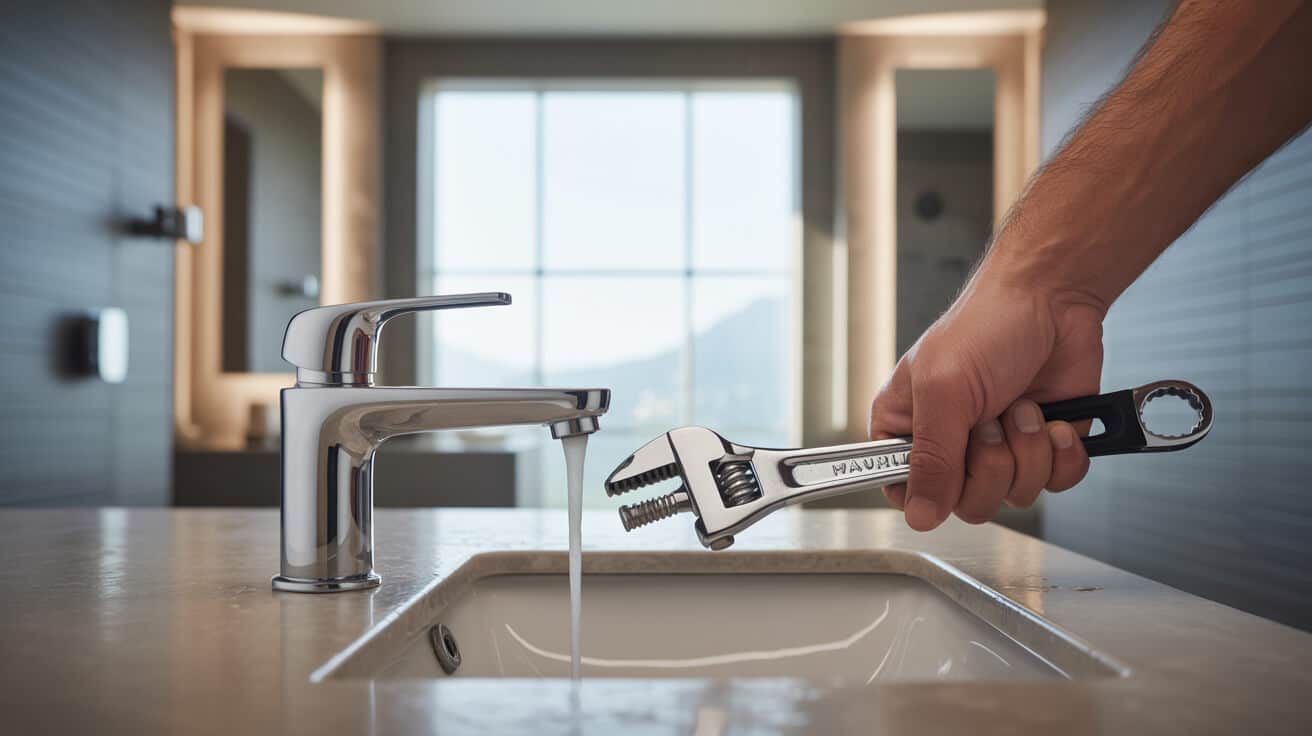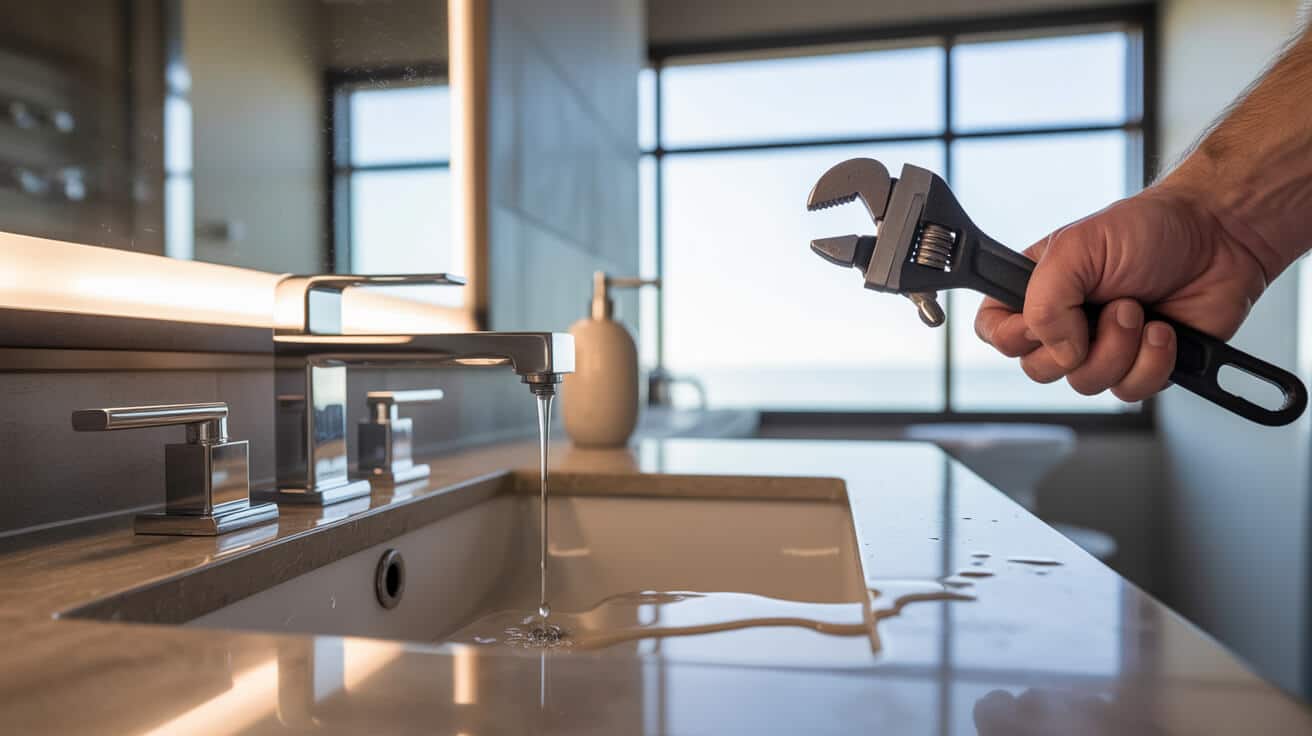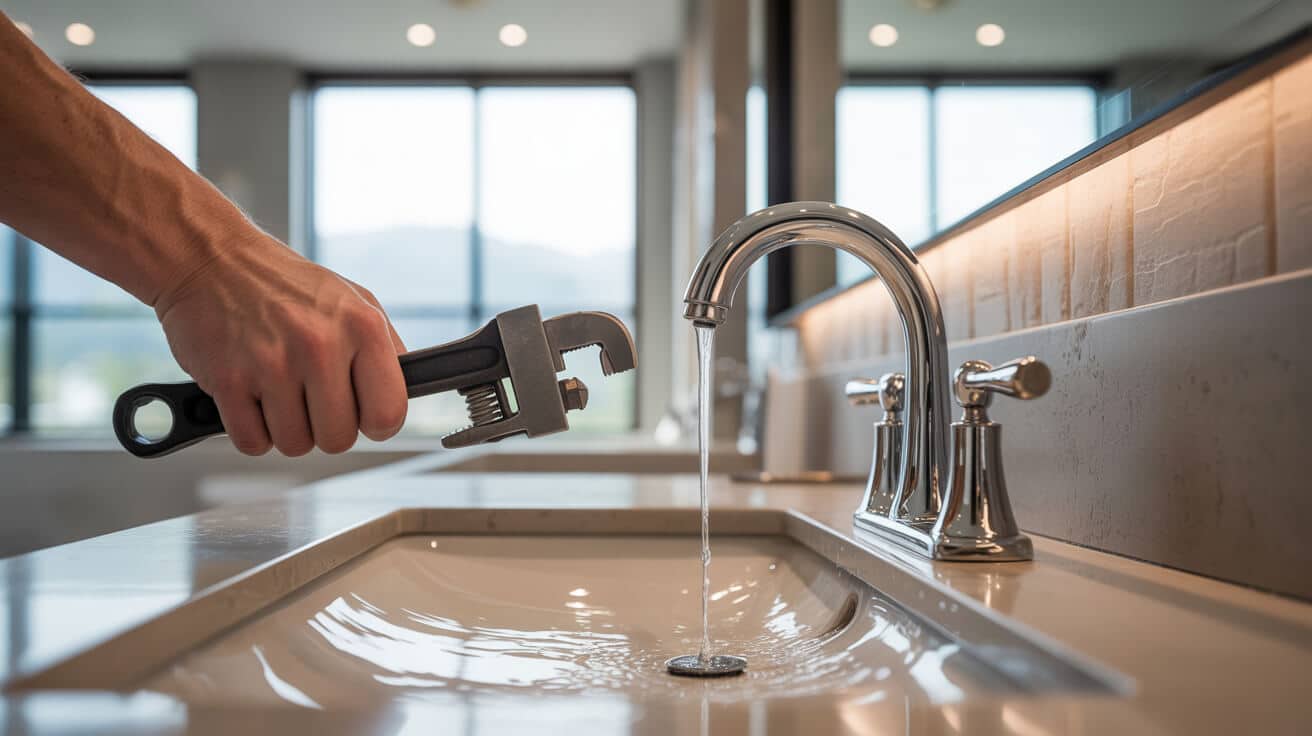When a water shutoff device fails to halt flow, the consequences quickly extend beyond inconvenience and annoyance. The inability to control water at a fixture may result in rising utility bills, interior water damage, and, in multi-user or tenanted settings, obligations under tenancy or safety regulations. Prompt assessment and repair is essential for the preservation of assets, reduction of costs, and fulfilment of legal duties—contexts in which organisations such as Plumbers 4U have become critical partners for your compliance and peace of mind.
Etymology or name origin
The term “tap” is standard in the United Kingdom, Ireland, New Zealand, and much of the Commonwealth, while “faucet” is widely used in the United States and Canada for sink, basin, and bath fixtures. “Valve” functions as a broader term, encompassing any mechanical device that regulates the flow of liquid or gas. Historical records illustrate the progression from primitive wooden devices of mediaeval Europe to the machined brass taps of Victorian England, as the industrial age produced standard components, terminology, and usage that underpin much of modern plumbing vocabulary.
Overview / context
Mechanical taps and faucets are ubiquitous water control devices, delivering potable water where it is needed and enabling maintenance isolation. They appear in kitchen sinks, bathrooms, commercial kitchens, laboratories, healthcare environments, and public washrooms. Your building’s daily operations, hygiene standards, and even regulatory compliance can be compromised by a defective tap, especially in settings serving vulnerable users or high-traffic public zones. The frequency of failure usually correlates with usage intensity, water quality, and age of installation, but any property is at risk. Landlords, facility managers, and homeowners must all consider the implications of unremedied faults: potential property damage, tenant complaints, increased insurance premiums, and, in regulated premises, non-compliance notices or even penalties.
History
Origins and early evolution
Ancient civilizations, such as Rome and Greece, constructed aqueducts and implemented rudimentary tap designs, often using bronze or wood to regulate water flows in baths, fountains, and private homes. The European Middle Ages saw the rise of communal wells and barrels fitted with simple wooden or metal spigots, precursors to the modern domestic tap.
Industrial emergence
The 19th century industrialization of Britain and Europe introduced mass-produced plumbing components: screw-threaded brass and iron taps, interchangeable washers, and serviceable assemblies that enabled widespread in-home water supply. The advent of running water in urban settings and public health reforms led to a proliferation of standardised tap designs, each subject to the improving rigours of engineering tolerance and regulatory oversight.
Contemporary evolution
The latter half of the 20th century introduced the ceramic cartridge and quarter-turn tap, reducing maintenance and wear. The 21st century’s focus on sustainability, user experience, and legal compliance has led to ergonomic handles, water-saving features, anti-scald mechanisms, and touchless innovations. Advances in plastic and composite materials have improved cost efficiency and durability, broadening installation contexts and user access—while creating new diagnostic and supply chain challenges in repair situations.

Concept / description
Mechanical structure
A tap is composed of a body, internal valve mechanism, handle or actuator, spout, sealing components (washer, O-ring, cartridge), and housing. Upon turning or lifting the handle, internal mechanisms either press a washer onto a valve seat (compression design) or align/disalign paired disc or cartridge elements (ceramic or ball mechanisms), thereby controlling water flow. The diagram below illustrates the basic structure of both compression and ceramic styles:
| Component | Compression Tap | Ceramic Cartridge Tap |
|---|---|---|
| Valve seat | Metal interface | Ceramic disc interface |
| Sealing device | Rubber/nylon washer | Hard ceramic/hybrid discs |
| Actuation | Multiple turns | Quarter-turn/lever action |
| Typical failure | Washer, seat, gland nut | Cartridge, disc, O-ring |
Types of actuation and closure
- Compression (washer) mechanisms: The most traditional, using downward motion to squash a washer against a metal seat.
- Ceramic disc cartridges: Deliver closure with a 90-degree turn; highly resistant to wear but susceptible to cracking from debris or improper installation.
- Mixer assemblies: Combine hot and cold feeds, typically using integrated cartridges.
- Ball/diaphragm valves: Less common, typically found in commercial or laboratory installations.
Relationship to water pressure
A well-functioning tap maintains closure by establishing a seal that resists system water pressure. Excessively high or fluctuating pressure can erode washers or report on cartridge cracks, particularly if you lack an upstream pressure-reducing valve. Inadequate closure risks grow as pressure interacts with embedded scale or particulate matter, particularly in hard water areas, eventually leading to a persistent drip or flow.
Common failure points
- Washer loss or distortion (compression taps)
- Cartridge seal damage or cracking (ceramic disc)
- O-ring perish (all types, especially older installations)
- Seat pitting or corrosion
- Handle spline wear, stripping, or fracture
- Gland nut loosening or stripping
Functionality / purpose / applications
Taps and faucets serve as the critical endpoint in your building’s plumbing system. They enable precise dispensing of water on demand and support the efficient management of resources as well as user safety. Within certain sectors such as hospitality, healthcare, and manufacturing, function also extends to regulatory functions: anti-scald control, contamination avoidance, cross-connection prevention, and routine hygiene. Design variations account for different user needs—lever or paddle handles for older adults or those with reduced dexterity, touch-free sensors for hygiene-critical sectors, thermostatic controls for burns prevention, and vandal-resistant fixtures for custodial environments.
Classifications / types / variants
By actuation mechanism
- Manual: Standard lever, cross, or knob handle, requiring user intervention.
- Self-closing/timed: Spring-loaded or pneumatic control, often specified in schools or public venues.
- Electronic/proximity: Infrared or capacitive sensors suitable for infection control, now common in healthcare or food prep.
By fixture variant
- Pillar: Separate hot/cold feeds, standard in traditional UK bathrooms.
- Mixer/monobloc: Combine hot and cold at a single spout, with single- or dual-lever action.
- Wall/deck-mounted: Provided by architectural or aesthetic requirements.
- Special-purpose: Knee-operated, foot pedal, thermostatic and code-access varieties.
By valve type
- Compression: Rely on replaceable washers, suited for low/moderate use environments.
- Ceramic disc/cartridge: Engineered for longevity and reduced maintenance.
- Ball/diaphragm: Employed for certain process or specialised laboratory systems.
Specialised features
- Anti-scald/thermostatic limitation:
- Water efficiency labelling or flow restricting:
- Universal design for disability or age:
Systems / tools / methodologies
Diagnostic toolkit
Inspection requires access to several key tools:
- Adjustable spanner, plumber’s wrench
- End-of-handle screwdrivers (various head types)
- Gland nut spanner
- Cartridge extractor
- Seat reseating tool
- Replacement washers, O-rings, cartridges
- PTFE tape and plumber’s grease
- Pipe clamps, blanking caps for emergency shutoff
Stepwise methodology
- Isolate supply: Turn off at fixture isolation valve; if unavailable, use main stopcock.
- Remove handle and access control mechanism: Document part order for reassembly.
- Inspect mechanism: Washer: check for deformation or wear; Cartridge: examine for cracks, mineral fouling.
- Examine valve seat: Assess for pitting or corrosion via visual and tactile inspection.
- Replace or repair as indicated: Fit new washer, cartridge, or regrind seat as required.
- Reassemble and restore flow: Test for closure integrity; monitor for secondary leaks.
- Document action: Essential for property managers, landlords, or for your compliance trail.
Decision guides
Repair vs. Replace Table:
| Factor | Repair | Replacement |
|---|---|---|
| Age < 10 years | Prioritise | Optional if parts fail |
| Part availability | Full kit or cartridge | Obsolete/unavailable |
| Material/fitting | Standard | Non-standard, corroded |
| Regulation | Remains compliant | Only meets with update |
| Labour | <1 hour | 1–2 hours w/instal |
| Warranty | May void if DIY | New coverage starts |
DIY approaches are possible for straightforward washer/cartridge replacements, but complex mixers or fixtures with proprietary internal designs typically warrant professional intervention from services like Plumbers 4U to ensure compliance.

Stakeholders / entities involved
- Homeowners: Responsible for initial shutdown, part procurement, and authorising repairs.
- Tenants: Report issues; in some tenancy agreements, may perform agreed minor repairs but not full fixture replacements.
- Landlords/property agents: Statutorily obligated for maintenance; must document repairs for housing standards and tenant records.
- Facility managers/commercial custodians: Tasked with rapid response, often under contractual SLA terms, especially for public access areas or vulnerable user groups.
- Technicians/engineers: Provide diagnosis, remediation, compliance assurance, and aftercare, often under organisation audit.
- Service companies (e.g., Plumbers 4U): Offer compliance-backed identification, repair, and documentation protocols; enable your organisation to maintain operational transparency and legal defensibility.
Legal / regulatory / ethical considerations
Regulatory codes
- The Water Supply (Water Fittings) Regulations 1999: Mandates approval for all installations/repairs affecting water supply in the UK; requires use of WRAS-approved parts and adherence to prescribed methods.
- Building Regulations Part G: Sets out requirements for safe hot water and efficient sanitary water systems.
- WRAS/WaterSafe certification: Recognises engineers proficient in compliant practices; provides trust backbone for property organisations.
Legal obligations
- Landlords: Must ensure that all taps and plumbing fixtures are maintained in working order, with repairs performed in a timely, documented way.
- Property Managers/Agents: Required to keep accurate records of maintenance actions, ensure tenant notification, and engage only certified professionals.
- Commercial/Institutional entities: Must safeguard building users, report health and safety breaches, and adhere to log-book or compliance audit requests.
Ethical responsibilities
Transparency in communication, prioritisation of repairs for your vulnerable users (elderly, children, or persons at higher health risk), and support for sustainable water use underscore the broader role that prompt, proper tap repair plays in responsible stewardship.
Performance metrics / data / measurements
| Metric | Typical Value / Range | Contextual Note |
|---|---|---|
| Failure rate (residential) | 0.2–0.4 per unit/year | Higher in public, old, or hard water areas |
| Water loss (continuous) | 100–500+ litres/day | Escalates with mixer taps |
| Median repair duration | 30–60 minutes (washer/cartridge) | Complex jobs 1–2 hours; add for access |
| Cost (DIY/professional) | £5–£20 (parts); £65–£200 (full replacement) | Excludes damage restoration, emergencies |
| Recurrence frequency | ↓67% with ceramic cartridge vs. ↑10% with washer | Industry trial stats/insurer research |
Persistent non-repair can contribute to higher property insurance premiums, increased regulatory scrutiny (especially for landlords), and degradation of trust among your tenants or service customers.
Challenges / barriers / limitations
Technical and operational barriers
- Obsolete/irregular fixtures: Non-standard or aged fittings complicate diagnosis and sourcing, sometimes necessitating full plumbing modifications.
- Concealed plumbing: Modern bespoke kitchens and buildouts may obscure access, requiring partial demolition or significant labour.
- Lack of isolation points: Some properties, especially converted older buildings, lack easy-to-use feed isolation; urgent repairs may then interrupt supply to an extended area or even the entire structure.
- DIY risks: Improper repairs may contravene regulations, cause insurance claim denials, or create new water hazards.
Socio-economic, organisational challenges
- Tenant vs. landlord expectations: Disputes over responsibility, risk of legal escalation, or inefficient communication.
- Timing and scheduling difficulties: Repair may need to be performed outside business hours or with rapid mobilisation if vulnerable occupants are affected.
- Budget constraints: Reluctance to conduct proactive replacement can lead to costlier emergency works.
Impact / influence / legacy
Unaddressed tap failures consume significant volumes of potable water and are frequently implicated in secondary damages—mould, warped cabinetry, electrical hazards. When your company or organisation adopts a proactive mechanism for detection and timely remediation, it can:
- Demonstrate environmental leadership by reducing water waste.
- Decrease insurance claims and associated premium increases.
- Enhance your user and resident satisfaction, advocacy, and trust.
- Influence property valuation and ongoing operational cost management.
- Support sectoral shifts towards reliability, maintenance transparency, and better contract enforcement with vendors and contractors.
Manufacturers and trade bodies increasingly recognise repair quality as a reputational currency; your organisation’s approach to tap repair may affect standing with both regulators and your broader community.
Future directions, cultural relevance, and design discourse
Trends in fixture manufacturing point toward increased integration of water-saving features, biosafe coatings, and anti-vandal designs. Material science research is driving the adoption of hybrid composites and self-lubricating cartridge elements, reducing mean failure rates and maintenance intervals. Regulatory regimes, led by organisations such as WRAS and WaterSafe, are pressing for ever-greater accountability, product traceability, and professionalisation. Your tenants, guests, and staff increasingly expect swift, discrete, and transparent maintenance—backed by compliant documentation. Cultural narratives around sustainability find their local expression when businesses and households reduce even minor leaks, reflecting a societal premium on stewardship, reliability, and user trust. Service organisations such as Plumbers 4U continue to refine your support, blending emergent technical methods with legal assurance and best-in-class customer service, helping your property, your company, or your organisation remain safe, compliant, and confident in every asset.

